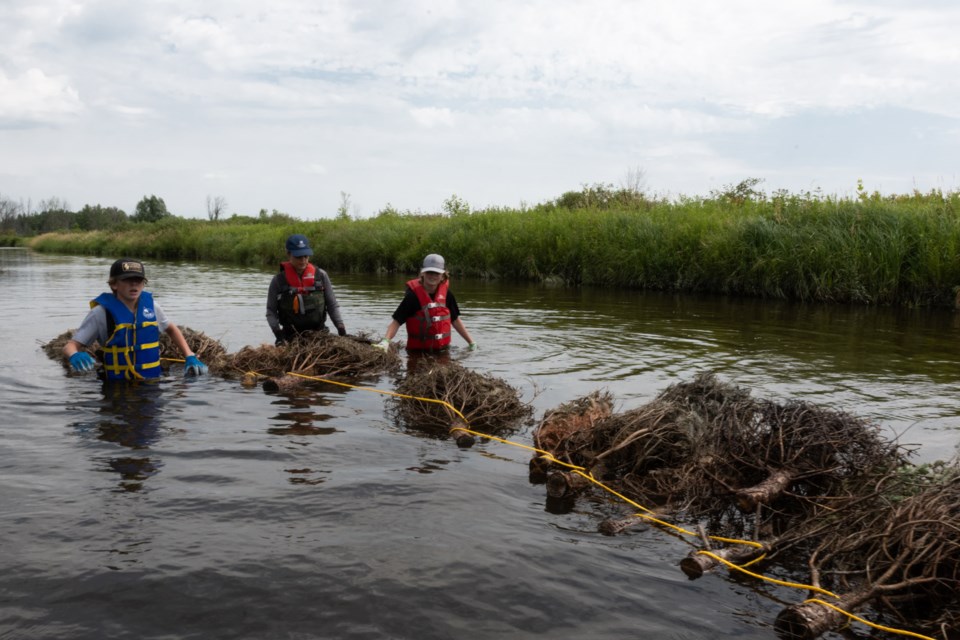Last week a group of volunteers in chest waders tied former and failed Christmas trees to the bottom of a stream near Angus — an exercise that's been repeated regularly since 2010.
Led by staff from the Nottawasaga Valley Conservation Authority and the Nature Conservancy of Canada, the effort is meant to restore the stream — called Willow Creek —to a winding river, instead of the straight path it has followed in more recent decades.
"The work that we were doing was installing wing deflectors," said Carolyn Davies, a conservation biologist with the Nature Conservancy of Canada. "Basically what that means is ... we are reusing ... old, dead conifer trees, a lot of which would have been a Christmas tree that never got chosen ... and we install those on the bank of the stream."
The trees are anchored to the stream bed with aviation cables in a triangle pattern and layered like shingles to create a strong structure that will capture sediment as the water flows through it.
"After all of the rain we've been getting, the river kind of looked like chocolate milk, so loaded full of sediment," said Davies. "That's because of erosion upstream ... all that sediment rushes down, and without actually having something in place, such as the bends in the river ... the sediment goes into the Minesing wetlands, and, over time, it can actually raise the level of the wetland, which we don't really want to happen."
Once, Willow Creek would have had lots of bends and curves for the water to navigate. It was also likely shaded by trees and brush. Through a change in use of the land surrounding it, which included dredging the creek to take water away from farm fields, Willow Creek now flows through open fields, mostly in a straight line.
"By putting in these wing deflectors, it helps to slow down the current," said Davies. "As the water goes into these woody structures ... the sediment has time to drop."
The shape and position of the wing deflectors help create pinch points in the creek to encourage the water to "meander." A wing deflector will help stabilize about 50 metres of bank downstream.
Each year, volunteers will add more layers to the wing deflectors, an effort that's been ongoing for 13 years now.
"By doing that, it actually increases the sort of meandering channel that would normally happen in a river system," said Davies.
The volunteers stood in the creek in chest waders and the trees were sent floating down the river toward them for installation. Over two days – July 20 and 21 – the volunteers installed 480 trees into 15-metre wing deflectors, adding stability to the stream bank for several hundred metres.
"It will eventually fix the creek for sure, but it does take quite a number of years to build these in," said Davies, noting that the trees will rot over time since they are constantly sitting in water. The decomposition process will add nutrients into the stream bed, which will also improve habitat conditions in Willow Creek.
If the tree pile gets high enough, sometimes plants can be added to the new berm to secure it and make it more permanent.
There are also ongoing volunteer events to help plant new trees along the stream. In addition to clear-cutting, the area of Willow Creek was also heavily impacted by the invasive emerald ash borer, which destroyed ash trees.
The Minesing Wetlands is one of the oldest active natural areas within the Nature Conservancy of Canada's spaces. It's now owned and managed by the Nottawasaga Valley Conservation Authority, which partners with the Conservancy on the work to protect and maintain the wetland. Minesing Wetlands includes about 10,937 hectares (27,025 acres) of wetlands and forests.
For more volunteer opportunities, visit the Nottawasaga Valley Conservation Authority website, and the Nature Conservancy of Canada website.
